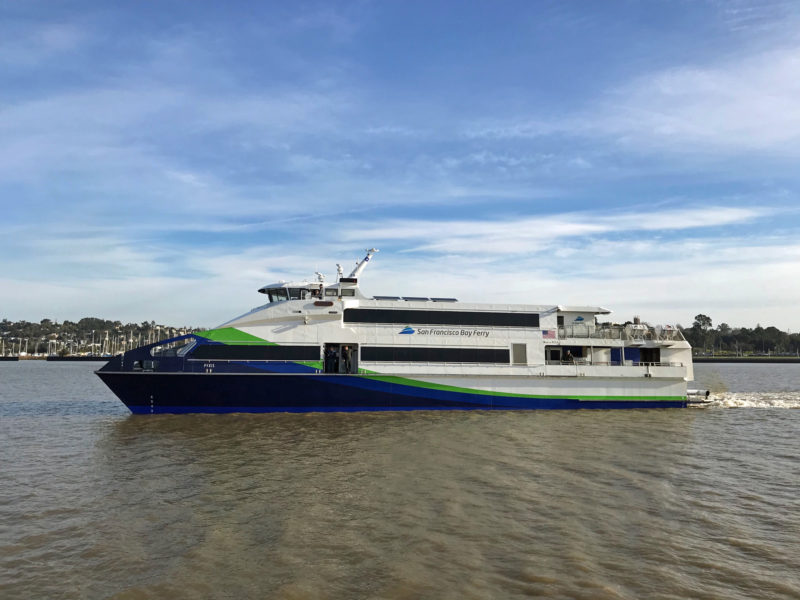The first U.S. passenger ferry with Tier 4 emissions controls went into service with the San Francisco Bay Ferry system in March. The 445-passenger high speed Pyxis (pronounced "pik-sis") is the fifth new ferry built for the fleet since the Hydrus-class started in 2017, and serves the growing Vallejo route.
It is the first of three new high-speed, high-capacity ferries that will primarily serve North Bay routes. The second ferry, the Vela, was delivered in August. A third ferry, Lyra, is expected to arrive in early 2020.
“They operate on a longer route than the Hydrus boats. We’re a one-hour trip,” said Martin Robbins, general manager of the Bay Ferry’s Vallejo division. “These are waterjet boats so they’re designed for 34 knots. They will make 37 or 38 knots running light.”
Delivered in February by Dakota Creek Industries Inc., Anacortes, Wash., the 142.7'x39.4'x5.4', all-aluminum Pyxis is the first new boat on the northern bay route since 1997. It is very similar in design to the earlier waterjet ferries also conceived by designers at Advanced Multihull Designs (AMD) of Australia, sized up to accommodate steady demand growth on the route, said Robbins.
“It’s largely the same design, 2.6 meters (8.5’) longer so we can get passenger capacity up from the mid-300s to 445,” he said. “We seen steady growth for five to six years. We slowed down a little bit, and that might have been because of our capacity limits. The parking lots are full and we’ve had to turn people away. Hopefully these new boats will help turn that around.”
Power comes from two MTU 16V4000M65 engines rated at 3,433 hp each, driving a pair of HamiltonJet HT810 waterjets through ZF 9055 gears. Propulsion integration by Pacific Power Group, Kent, Wash., includes the Tier 4 emissions control – a first for U.S. ferries, and an expensive endeavor that other operators have to date avoided.
“We didn’t have any choice, it’s the law” under California state mandates, said Robbins. PPG supplied power packages and emissions controls for the Hydrus-class boats that surpassed their nominal Tier 3 ratings, classing them as the cleanest U.S. passenger ferries.
Operated by the Water Emergency Transportation Authority (WETA), the bay ferry system has long been a pioneer in cleaner boats. The 320-passenger Solano, delivered by Dakota Creek in 2004, was equipped with an early, experimental selective catalytic reduction (SCR) emissions system that was not so efficient “but it proved very educational,” said Robbins. “In the next 12 to 14 years the technology has become more advanced.”
The three vessels were designed and built at a cost of $23 million each. Funding sources included Federal Transit Administration grants, bridge toll revenue, State Proposition 1B and State Transit Assistance.





